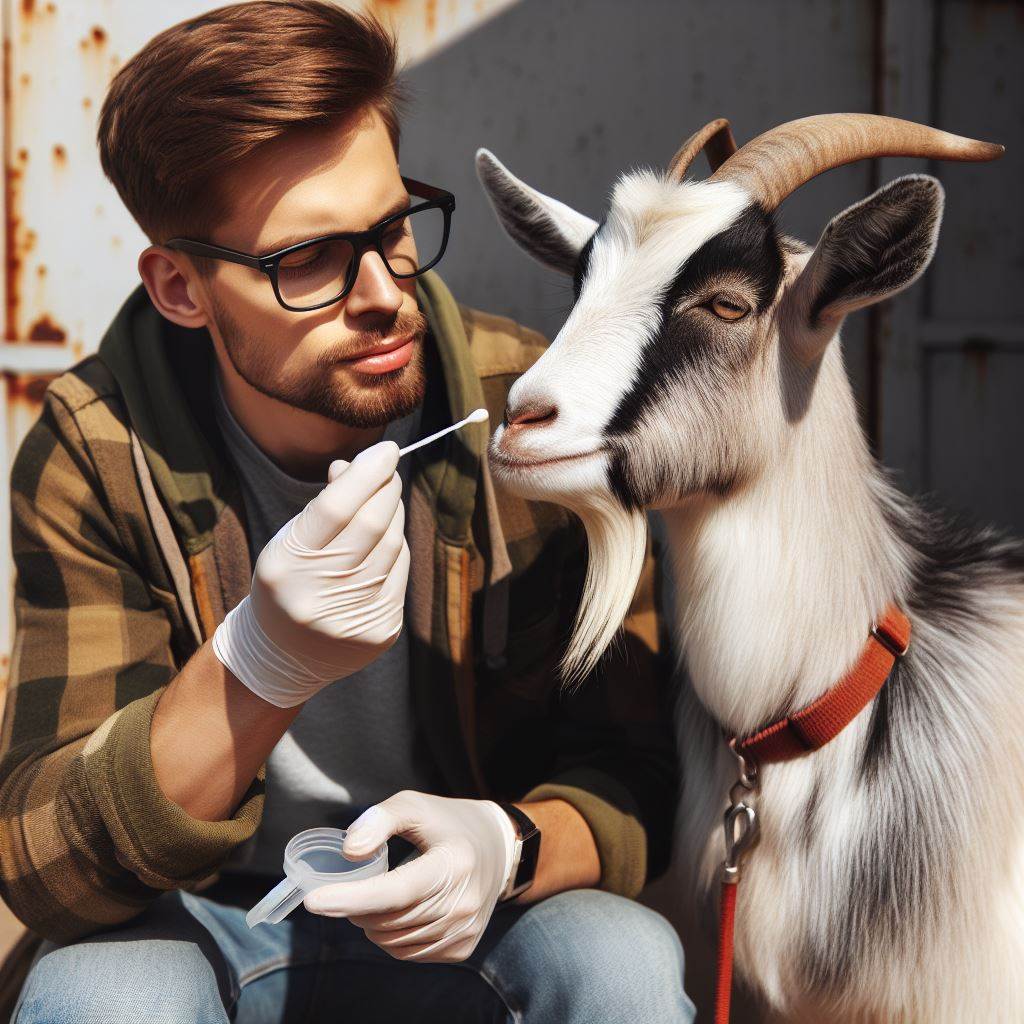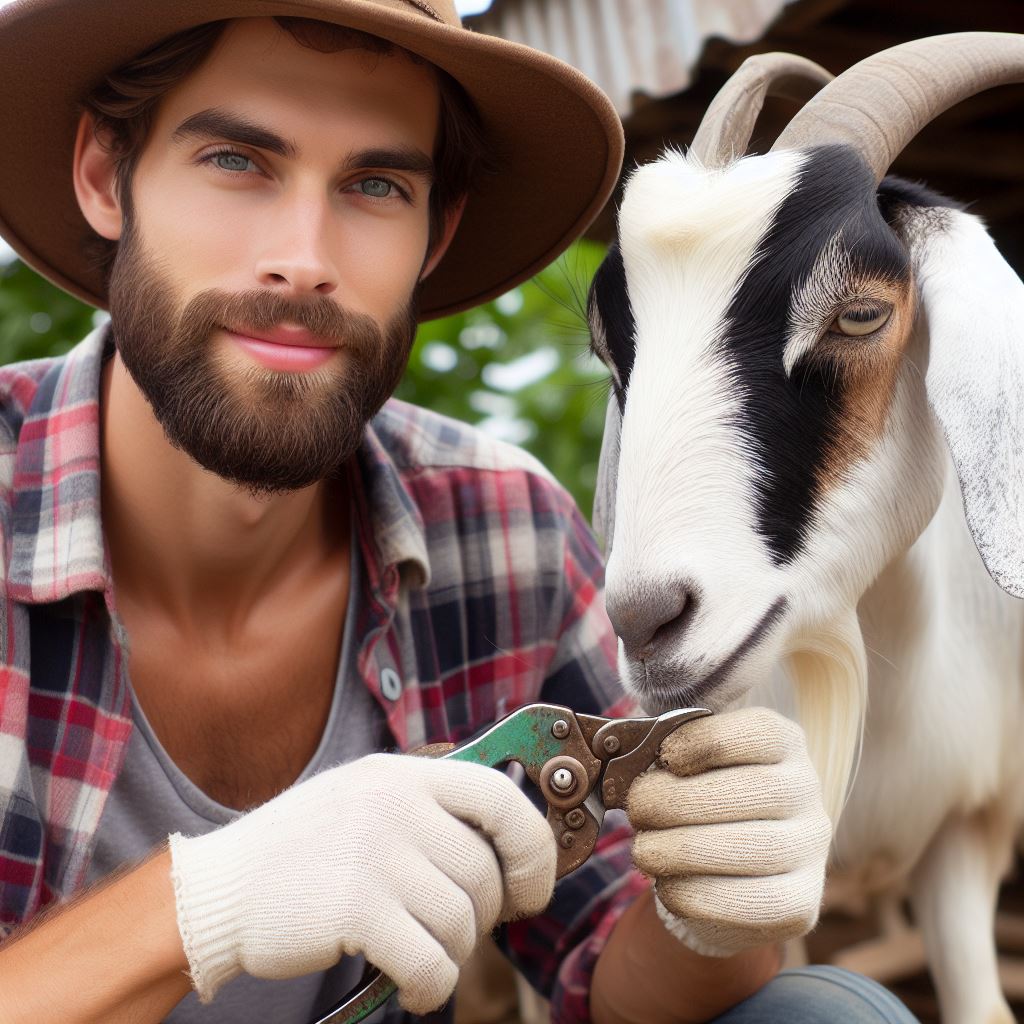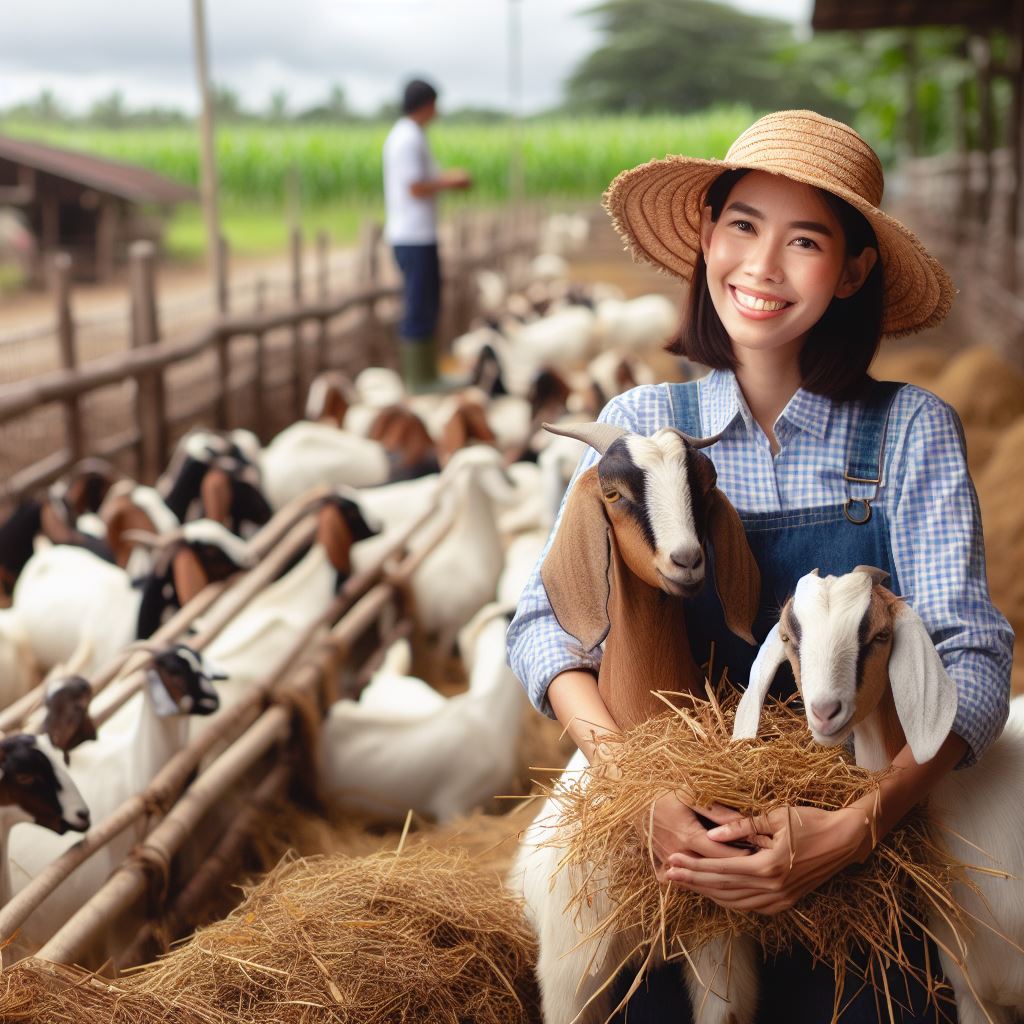Introduction
Importance of goat genetics in improving herd quality
Goat genetics plays a crucial role in enhancing the quality of a herd.
By understanding the fundamentals of genetics, goat breeders can make informed breeding decisions to improve desirable traits.
This section provides a brief overview of the topic, highlighting the significance of goat genetics in herd improvement.
We will explore how genetics shape the characteristics of goats and how breeders can utilize this knowledge to their advantage.
Genetics is a fundamental aspect of goat breeding that has a significant impact on improving the quality of a herd.
By understanding the principles of genetics and how they influence the characteristics of goats, breeders can make informed decisions to enhance specific traits.
Brief overview of the topic
The genetic makeup of an animal determines its physical attributes, such as size, coat color, milk production, and disease resistance.
By selectively breeding goats with desirable genetic traits, breeders can gradually improve the quality of their herds over generations.
Selective breeding involves choosing parent animals with superior genetics to produce offspring with enhanced characteristics.
This process allows breeders to focus on specific traits they wish to improve, such as increased milk production, improved meat quality, or better adaptability to certain environments.
Genetic evaluation techniques, such as performance testing and pedigree analysis, enable breeders to identify the genetic potential of individual goats.
This information helps in making informed breeding decisions and selecting the best candidates for reproduction.
Advancements in technology, such as DNA testing and genomic selection, have revolutionized goat genetics.
These tools allow breeders to identify specific genes responsible for desirable traits and accelerate the rate of genetic improvement within their herds.
Therefore, understanding goat genetics is essential for improving the quality of a herd.
Transform Your Agribusiness
Unlock your farm's potential with expert advice tailored to your needs. Get actionable steps that drive real results.
Get StartedBy applying genetic principles, breeders can select superior animals, enhance desired traits, and ultimately produce healthier and more productive goats.
Good genetic management practices are key to achieving herd improvement and ensuring the long-term success of goat breeding endeavors.
Understanding the Basics of Goat Genetics
Definition of genetics and its role in goat breeding
Genetics is the study of heredity and how traits are passed from one generation to another in living organisms.
In goat breeding, genetics plays a vital role in determining the traits and characteristics of the herd.
Key concepts in goat genetics
Genotype vs. phenotype
A genotype refers to the genetic makeup of an individual goat, while phenotype refers to the observable traits or characteristics that are expressed.
Dominant and recessive traits
Dominant traits are those that are expressed or observed even if an individual carries only one copy of the gene, while recessive traits require both copies of the gene to be present for expression.
Inheritance patterns
There are three main inheritance patterns in goat genetics: dominant, recessive, and codominant.
Dominant inheritance occurs when a single copy of the dominant gene is enough to express a trait.
In this case, a goat will exhibit the dominant trait if it carries at least one dominant gene.
Recessive inheritance occurs when an individual needs to have two copies of the recessive gene to express a trait.
If a goat inherits one copy of the recessive gene from each parent, it will exhibit the recessive trait.
Codominant inheritance happens when neither gene is dominant or recessive, and both traits are expressed simultaneously.
For example, if a goat inherits a black coat color allele from one parent and a white coat color allele from the other, it will exhibit a coat color that is a mix of black and white.
Understanding the basics of goat genetics is crucial for goat breeders who aim to improve the quality of their herds.
By comprehending the concepts of genotype vs. phenotype, dominant and recessive traits, and inheritance patterns, breeders can make informed decisions when selecting breeding pairs and predicting the traits that will be passed on to future generations.
Read: Summer Health Tips for Small Ruminants
Selecting the Right Genetics for Your Herd
Identifying your breeding goals and objectives
Before selecting genetics for your goat herd, it is essential to identify your breeding goals and objectives.
This means considering the purpose of your herd, whether it’s for milk production, meat, or fiber.
You need to determine the specific traits you want to improve or maintain in your herd, such as size, conformation, production capacity, or disease resistance.
Remember to take into account your herd’s environmental conditions and market preferences, as these factors can influence your breeding goals as well.
Choosing the right breed for your specific needs
Once you have defined your breeding goals, it’s time to choose the right breed that aligns with your specific needs.
Each goat breed has unique characteristics and strengths.
If milk production is your primary objective, you might consider breeds like Saanen or Alpine.
For meat production, Boer goats are renowned for their excellent meat quality.
Showcase Your Farming Business
Publish your professional farming services profile on our blog for a one-time fee of $200 and reach a dedicated audience of farmers and agribusiness owners.
Publish Your ProfileIf you are looking for goats with luxurious fiber, Angora and Cashmere breeds are the way to go.
Be sure to thoroughly research each breed’s attributes to make an informed decision.
Evaluating pedigree and performance records
When selecting genetics, evaluating pedigree and performance records is crucial.
This allows you to assess the lineage and performance history of potential breeding animals.
Studying pedigree records helps you identify any genetic predisposition to certain diseases or hereditary issues.
It also helps determine whether the traits you desire are consistently present in their bloodline.
Performance records provide essential information about an animal’s productivity, such as milk or meat production, fiber yield, or show results.
Look for animals with a track record that aligns with your breeding goals.
Utilizing genetic testing and technologies
In the modern era, genetic testing and technologies play a vital role in selecting the right genetics for your herd.
These tools provide accurate insights into an animal’s genetic makeup.
Genetic tests can identify various factors, including the likelihood of certain diseases, the presence of specific genes related to desired traits, or even inbreeding coefficients.
By incorporating genetic testing into your selection process, you can make more informed decisions and minimize the risks associated with breeding unwanted traits or genetic disorders.
Technologies like artificial insemination (AI) and embryo transfer (ET) allow you to access genetic material from superior animals that may not be physically present on your farm.
Using AI and ET, you can introduce desired genetics into your herd, maximizing the potential for genetic improvement while maintaining diversity.
To improve your goat herd’s quality, selecting the right genetics is paramount.
By identifying your breeding goals, choosing the appropriate breed, evaluating pedigree and performance records, and utilizing genetic testing and technologies, you can ensure the long-term success and profitability of your goat operation.
Read: Lambing Guide: Best Practices

Breeding Strategies for Genetic Improvement
Achieving genetic improvement in your goat herd requires careful planning and strategic breeding strategies.
Understanding the pros and cons of different breeding approaches is essential to make informed decisions.
Here, we will discuss three main breeding strategies: inbreeding, linebreeding, and crossbreeding, emphasizing the importance of maintaining genetic diversity.
Inbreeding vs. Outbreeding: Pros and Cons
Inbreeding, the mating of closely related individuals, offers certain advantages.
It helps in fixing desirable traits, increasing genetic purity, and maintaining a consistent line.
However, excessive inbreeding can lead to the expression of deleterious recessive genes, reducing overall fitness and fertility.
Outbreeding, on the other hand, involves mating unrelated individuals from different lines or breeds.
This strategy promotes heterosis or hybrid vigor, resulting in increased growth rates, disease resistance, and overall productivity.
However, outbreeding may also dilute desirable traits and reduce genetic uniformity.
Linebreeding as a Middle Ground Approach
Linebreeding strikes a balance between inbreeding and outbreeding.
It involves mating individuals who are more distantly related but still share a common ancestor.
This approach aims to maintain a high genetic contribution from a particular ancestor while minimizing the risks associated with excessive inbreeding.
The main advantage of linebreeding is the ability to concentrate desirable traits without compromising genetic diversity.
By selecting specific individuals with superior characteristics and using them as breeding stock, breeders can enhance certain traits consistently over time while mitigating the risks associated with increased inbreeding.
Crossbreeding for Hybrid Vigor
Crossbreeding entails mating two or more different breeds to combine their complementary traits and achieve hybrid vigor.
This strategy maximizes heterozygosity, leading to improved performance and adaptability in the offspring.
The hybrid vigor obtained through crossbreeding can result in higher growth rates, increased fertility, and improved disease resistance.
It is particularly beneficial for commercial goat production systems where productivity and efficiency are paramount.
However, it is important to note that the benefits of crossbreeding may diminish over successive generations if not properly managed.
Importance of Maintaining Genetic Diversity
Regardless of the chosen breeding strategy, it is crucial to prioritize and maintain genetic diversity within goat herds.
Genetic diversity ensures the long-term viability and adaptability of a population, reducing the risk of inbreeding depression, and improving overall resilience to disease and environmental challenges.
To maintain genetic diversity, breeders should avoid excessive reliance on a single breeding approach and periodically introduce unrelated individuals from diverse genetic backgrounds.
Regular performance evaluations and genetic testing can assist in identifying individuals with desirable traits while ensuring genetic variability.
Showcase Your Farming Business
Publish your professional farming services profile on our blog for a one-time fee of $200 and reach a dedicated audience of farmers and agribusiness owners.
Publish Your ProfileIn fact, breeding strategies play a central role in improving the genetic quality of goat herds.
Breeders must carefully consider the pros and cons of inbreeding, outbreeding, linebreeding, and crossbreeding to achieve their desired goals.
Maintaining genetic diversity is vital for the long-term sustainability and success of any breeding program.
By using a combination of these strategies and adopting responsible breeding practices, breeders can continually improve their herd’s quality and drive genetic progress in the goat industry.
Read: Sustainable Rabbit Farming 101
Managing the Genetic Health of Your Herd
Regular health assessments and genetics screenings
Perform regular health assessments to monitor the overall well-being of your goat herd.
Implement genetics screenings to identify potential genetic issues and assess the health of individual goats.
Conduct thorough physical examinations, including evaluations of body condition, reproductive health, and overall productivity.
Collect samples for genetic testing, such as blood or DNA, to identify underlying genetic conditions.
Utilize available diagnostic tools and veterinary expertise to ensure accurate assessment and interpretation of genetic health.
Keep detailed records of health assessments and genetics screenings to track any changes or patterns over time.
Consider consulting with a geneticist or specialist to develop a comprehensive genetics management plan.
Addressing genetic disorders and hereditary diseases
Identify and address any known or suspected genetic disorders within your goat herd.
Work closely with a veterinarian to diagnose specific genetic conditions and determine appropriate treatment or management strategies.
Implement responsible breeding practices to reduce the risk of passing on hereditary diseases.
Evaluate the genetic backgrounds of potential breeding pairs to minimize the likelihood of genetic disorders.
Consider utilizing genetic tests to screen for specific diseases or conditions before breeding.
Explore available genetic counseling services to guide your breeding decisions and mitigate the risk of hereditary diseases.
Regularly monitor offspring for any signs of genetic disorders and intervene as necessary.
Strategies for avoiding genetic bottlenecks
Diversify your herd’s genetics by introducing new bloodlines periodically.
Collaborate with other goat breeders to exchange breeding stock and avoid excessive inbreeding.
Perform genetic evaluations and select breeding animals based on their genetic diversity and potential contributions to the herd.
Implement rotational or selective breeding practices to maintain healthy levels of genetic variability.
Consider utilizing assisted reproductive technologies, such as artificial insemination or embryo transfer, to broaden your herd’s genetic pool.
Educate yourself about the importance of genetic diversity and the potential consequences of genetic bottlenecks.
Regularly review and update your breeding program to maintain genetic health and prevent the accumulation of deleterious traits.
By prioritizing the management of your goat herd’s genetic health, you can ensure the long-term sustainability and quality of your herd.
Regular health assessments and genetics screenings, addressing genetic disorders and hereditary diseases, as well as implementing strategies to avoid genetic bottlenecks, will contribute to a thriving and robust goat herd.
Read: Green Horse Care Strategies
Tracking and Recording Genetic Data
Importance of accurate record-keeping
Accurate record-keeping is vital for goat genetics improvement.
It helps in tracking and analyzing the genetic traits of individual goats.
Records provide valuable information for making informed breeding decisions.
Documentation is essential to monitor the progress of the herd’s genetic quality over time.
Accurate records also aid in identifying any potential health issues or genetic abnormalities.
Utilizing software and database systems
Modern technology provides powerful tools for recording and managing genetic data.
Dedicated software and database systems offer efficient ways to store and retrieve information.
These systems can streamline record-keeping processes, reducing the chances of errors or data loss.
Software allows for easy data analysis and identification of valuable genetic trends within the herd.
Utilizing technology also promotes sharing and collaboration among breeders and researchers.
Capturing essential information for breeding decisions
Tracking genetic data enables breeders to make informed decisions about potential breeding matches.
Showcase Your Farming Business
Publish your professional farming services profile on our blog for a one-time fee of $200 and reach a dedicated audience of farmers and agribusiness owners.
Publish Your ProfileInformation such as birth details, health records, and lineage are crucial for selecting suitable parents.
Recording and comparing traits and performance data helps identify superior individuals for breeding.
Tracking genetic information assists in avoiding inbreeding and promoting genetic diversity within the herd.
By capturing essential information, breeders can develop a strategic breeding program that targets specific traits.
Accurate record-keeping is fundamental in improving the quality of goat herds.
Keeping records allows breeders to track and analyze genetic data, make informed breeding decisions, and monitor the progress of their herd over time.
Utilizing software and database systems can significantly enhance the efficiency and effectiveness of record-keeping processes.
These technological tools enable easy storage, analysis, and sharing of genetic information, fostering collaboration among breeders and researchers.
Capturing essential information for breeding decisions is another crucial aspect of tracking genetic data.
Breeding matches can be optimized by considering birth details, health records, and lineage.
By recording and comparing traits and performance data, breeders can identify the most promising individuals for breeding, ensuring the improvement of desirable traits within the herd.
Additionally, tracking genetic information helps prevent inbreeding and promotes genetic diversity, essential for long-term sustainability.
In short, diligent record-keeping, aided by software and database systems, is integral to the success of goat genetics improvement.
Accurate records enable breeders to make informed decisions, avoid potential health issues or genetic abnormalities, and develop a targeted breeding program.
By utilizing technology and capturing essential data, breeders can enhance the quality of their herds and contribute to the overall advancement of goat genetics research and breeding practices.
Incorporating Genetic Selection into Your Breeding Program
A high-quality goat herd is the result of careful genetic selection.
By identifying desirable traits for improvement and utilizing performance data and estimated breeding values (EBVs), you can ensure the continuous improvement of your herd.
Identifying Desirable Traits for Improvement
Assess your breeding goals and determine the traits you want to improve in your herd.
Consider qualities such as milk production, conformation, disease resistance, and temperament.
Research breed standards and consult with experienced breeders to understand desirable traits.
Make a list of these traits and prioritize them based on your specific goals.
Utilizing Performance Data and Estimated Breeding Values (EBVs)
Collect and analyze performance data of your goats, such as milk yield, weight, and growth rate.
Use this data to calculate estimated breeding values (EBVs) for each animal.
EBVs provide an estimate of an animal’s genetic merit for specific traits.
Compare EBVs across your herd to identify animals with superior genetics for targeted traits.
Implementing a Systematic and Selective Breeding Plan
Establish a systematic breeding plan that aligns with your breeding goals and desired traits.
Select breeding animals based on their superior genetics, as indicated by their EBVs.
Consider genetic diversification by introducing unrelated animals or using artificial insemination.
Monitor and document breeding outcomes to track the progress of your breeding program.
Cull animals that do not meet your breeding goals and invest in superior genetics.
Periodically Reassessing Breeding Goals and Strategies
Regularly evaluate the progress of your herd and reassess your breeding goals.
Consider market demands and industry trends to adapt your breeding strategies accordingly.
Stay informed about new research and advancements in goat genetics to fine-tune your approach.
Review and adjust your breeding plan to ensure continuous improvement and success.
By incorporating genetic selection into your breeding program, you can steadily enhance the quality of your goat herd.
Identifying desirable traits, using performance data and EBVs, implementing a selective breeding plan, and regularly reviewing your goals will enable you to achieve long-term success and produce superior goats.
Conclusion
Recap of key points discussed
Understanding the importance of goat genetics in improving herd quality.
The impact of genetic traits on various aspects of goat production.
Identifying genetic strengths and weaknesses in your herd through evaluation.
The role of selective breeding in developing desirable genetic characteristics.
Showcase Your Farming Business
Publish your professional farming services profile on our blog for a one-time fee of $200 and reach a dedicated audience of farmers and agribusiness owners.
Publish Your ProfileThe significance of genetic diversity for overall herd health and disease resistance.
Encouragement to prioritize goat genetics for herd improvement
By recognizing the valuable effects of genetics on your herd, you can take proactive steps to enhance their quality.
Call-to-action to apply the knowledge gained to enhance herd quality
Now that you understand the impact of genetics, make a commitment to implement selective breeding strategies and evaluate genetic strengths and weaknesses to achieve herd improvement.





Where can i get Genetic testing done for Palatoschisis in Dairy Goats?
thanks, Edwin.